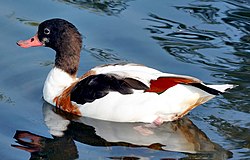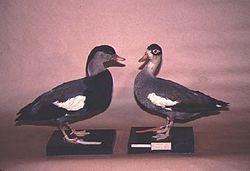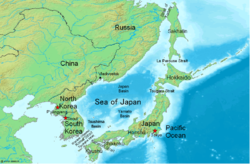| Shelducks | |
|---|---|
 | |
| Female common shelduck | |
| Scientific classification | |
| Kingdom: | Animalia |
| Phylum: | Chordata |
| Class: | Aves |
| Order: | Anseriformes |
| Family: | Anatidae |
| Subfamily: | Tadorninae |
| Genus: | Tadorna F. Boie, 1822 |
| Type species | |
| Anas familiaris [1] = Anas tadorna Boie, 1822 | |
| Species | |
T. ferruginea Contents | |
| Synonyms | |
see text | |
The shelducks, most species of which are found in the genus Tadorna (except for the Radjah shelduck, which is now found in its own monotypic genus Radjah), are a group of large birds in the Tadornini tribe of the Anatidae, the biological family that includes the ducks and most duck-like waterfowl such as the geese and swans.

















